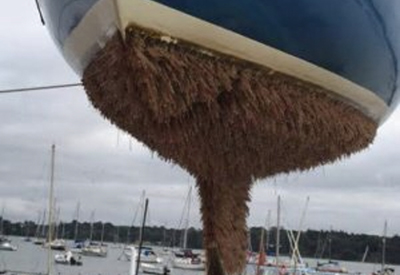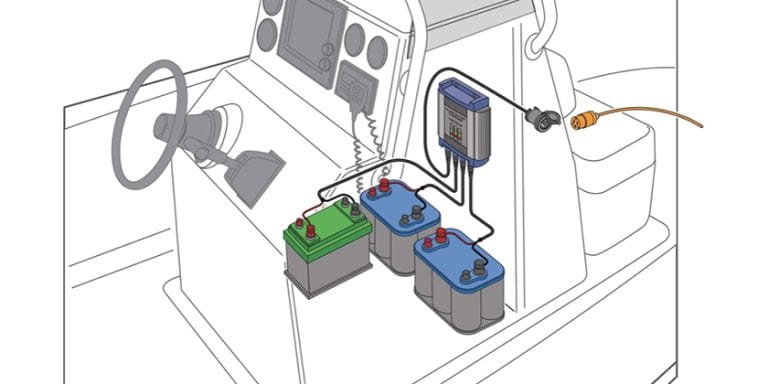Ask Andrew – Fair or foul

Apr 11, 2019
A timely series of questions came in this week regarding the uses, functionality and the ways to purchase antifouling paint. Here they are:
1) How necessary is anti-fouling paint in the Spring?
2) What is it actually doing? What purpose does it serve – Does it prevent damage to the gelcoat, or is it simply protection
3) Are there paints less expensive than VC17
4) Can Antifouling be purchased in larger sizes (gallons).
 The purpose of paint below the waterline is to stop marine growth and animals from sticking to the hull and causing damage and drag. Most of these paint products have a chemical base that, over time, will wear away in the water the longer it’s immersed and effectively prevent hull growth.
The purpose of paint below the waterline is to stop marine growth and animals from sticking to the hull and causing damage and drag. Most of these paint products have a chemical base that, over time, will wear away in the water the longer it’s immersed and effectively prevent hull growth.
When a brand new boat is shipped to a dealer or customer, they typically don’t have any antifouling. This is a preventative maintenance item that many boaters choose to add-on before launching each spring, in order to take advantage of the benefits of paint below the waterline. Boats that sit for long periods in shallow or stagnant water tend to be most at risk of marine growth attaching to the hull, potentially causing damage.
Many boaters who trailer their boats and remove them from the water after each use, find little need for antifouling paints (though, white gelcoat does tend to get a ‘tea stained’ look by the end of the season).
 freshly applied VC17
freshly applied VC17
In sailing circles, VC17 has become the standard in antifouling paint. The advantage with VC 17 (and comparable brands) is that it gives antifouling protection, but is very smooth– causing very little drag on the vessel’s hull as it moves through the water. On a racing sailboat, this can be very advantageous.
Does antifouling paint prevent damage to gelcoat? Not really. It certainly provides an extra layer, so that any scrapes or bumps will take off antifouling layers before gelcoat, but it doesn’t ‘protect’ gelcoat from osmotic blistering. To protect gelcoat from osmotic blistering, a barrier coat should be applied (an epoxy base that is layered between the gelcoat and antifouling paint).
Buying and applying antifouling paint is a tough decision. The boater is weighing out how they use their boat, and how much preventative maintenance an antifouling application will give them, vs the cost of the paint. A quart can cost upwards of $70, and gallons can run into many hundreds of dollars.
 To sum all of this up, and perhaps at risk of oversimplifying needs:
To sum all of this up, and perhaps at risk of oversimplifying needs:
Sailboats – use a thin, low friction antifouling such as VC 17 – This will prevent marine growth, but will allow efficient movement through the water
Cruisers – use an antifoul paint that provides quality protection from marine growth, but with the risk of more friction through the water. This is balanced by a lower cost per quart or gallon, with little additional fuel costs. Using a quality antifoul providing maximum protection will minimize future maintenance and repair costs from damage to the underwater gelcoat.
Trailerable boats – if kept in the water during the boating season, use an antifouling paint that balances out protection and cost. If launched and recovered for each use, it may make more sense to NOT use an antifouling paint – as the protection it affords may be less than its cost.
As the weather breaks – enjoy the pre-season maintenance process, and safe launch!
 Andrew McDonald is the owner of Lakeside Marine Services – a boat repair/maintenance firm based in Toronto. Andrew has worked in the marine industry for 12 years and is a graduate of the Georgian College ‘Mechanical Techniques – Marine Engine Mechanic’ program.
Andrew McDonald is the owner of Lakeside Marine Services – a boat repair/maintenance firm based in Toronto. Andrew has worked in the marine industry for 12 years and is a graduate of the Georgian College ‘Mechanical Techniques – Marine Engine Mechanic’ program.
Questions or comments for Andrew? Email him directly via: askandrew@lakesidemarineservices.ca




























